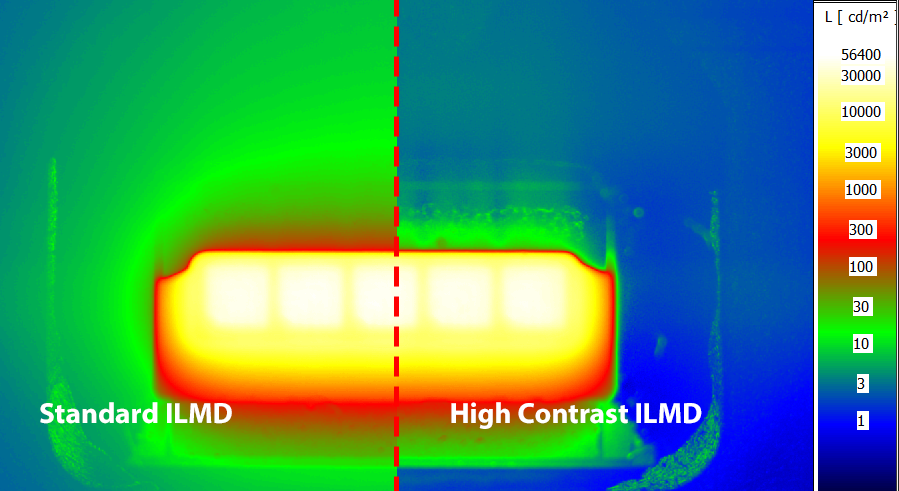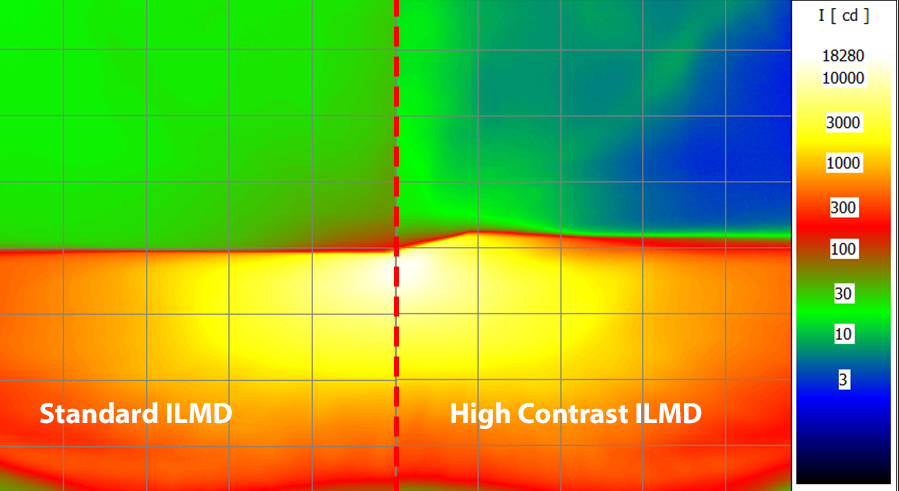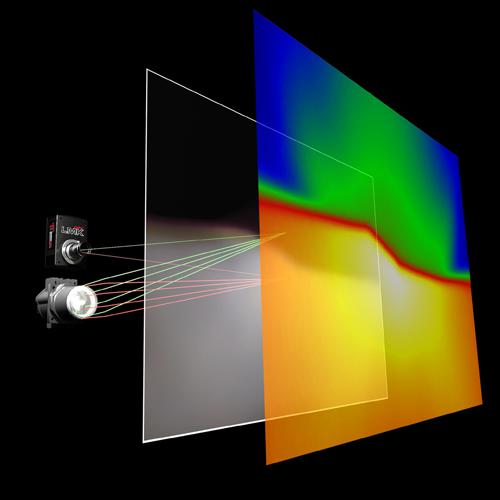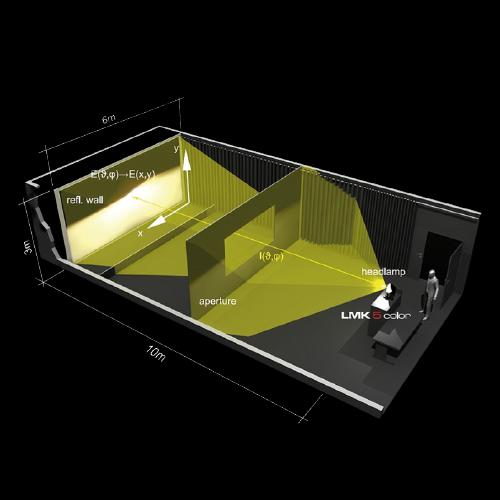Two different measured objects with respectively an uncorrected and corrected version
Stray Light Correction
Application Note – Stray Light Correction
This page shows a summary of the application note. Topic of the document is the stray light correction of ILMDs and its influence on measurement results regarding contrast.
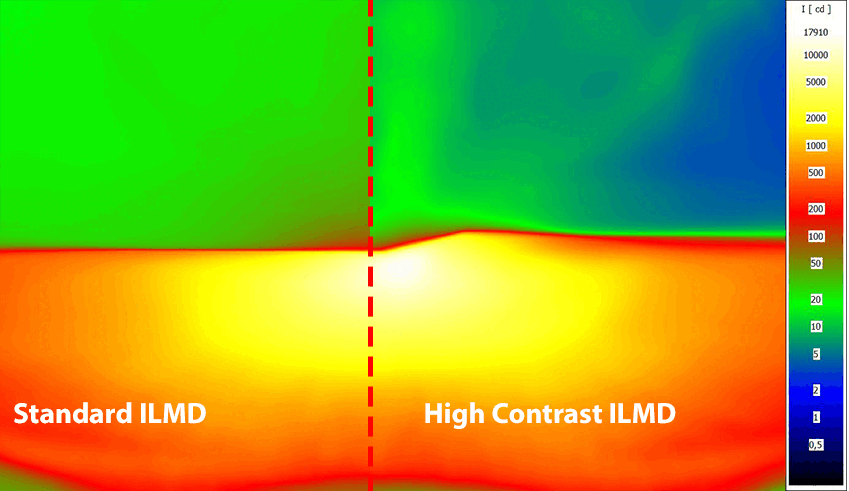
What is stray light?
Stray light is an ever-present phenomenon in optical devices. It describes the light that is scattered and reflected from surfaces inside and outside the device. This leads to unwanted images on the sensor.
The following video uses an LED measurement as an example to show how stray light affects the measured values in dark image areas and where it occurs. The yellow rays represent the actual (ideal) beam patterns, whereas the red rays show unwanted reflections and scattering. In sum, these unwanted components lead to an additional signal on the sensor that does not originate from the source but is wrongly assigned to it.
What is the difference between dynamic range and contrast?
The two terms "dynamic range" and "contrast" are often confused. Dynamic range is defined as the possible range of values for any given pixel, including saturation and various integration or exposure times. Contrast is the difference between two areas in one image.
The LMK can measure very bright sources, such as a bright LED or the sun, with very high accuracy. The LMK can also measure very low values of 1 cd/m² with high accuracy, such as dark symbols or the reflected luminance from a street at night. In the former, the integration time is very short (~ 100 μs), and in the latter, the integration time is seconds without oversaturating the sensor. This represents a dynamic range of 1:10 000 000. However, a contrast of 1:10 000 000 would mean measuring the same dark symbol simultaneously, placed next to the sun, would be possible. The system would provide accurate measurement results of the sun in several Mcd/m² and the symbol with only 1 cd/m² in the same image, which is physically impossible because of stray light. Hence, the measurement results of the symbol will be wrong.
Results with stray light correction
The influence of stray light can be minimized by using anti-reflective coatings and well-designed apertures in the lens. But even a good anti-reflective coating still has about 0.5% reflection per surface. So across all lenses, even a very good lens will quickly have total stray light of 1% or more. TechnoTeam has decades of experience in measuring high-contrast images in both product development and production. By developing innovative calibration methods, stray light models and correction algorithms, we have been able to reduce the effects of stray light significantly.
In the following images, the values in the dark zone decrease from 30 cd to 3 cd or from 30 cd/m² to 3 cd/m² with the corrected system.
Quality indices for quantifying contrast
The CIE244:2021 presents several quality indices for characterizing camera systems. In regard to contrast, the relevant indices are f23, f24, and f25.
| Description | Standard system | High-contrast system | |
|---|---|---|---|
| f23 | Effect of surrounding field | 1:1 000 | 1:2 000 |
| f24 | Stray light influence for negative contrast | 1:100 | 1:2 000 |
| f25 | Edge function | 1:1 500 | 1:15 000 |
While most manufacturers are unwilling to disclose such quality indices for their systems, TechnoTeam freely does so. Compared to other camera systems, we have found that the LMK can measure about 10× higher contrast.
Summary
This Application note explained what stray light is, its cause, and its influence on measurement results. For nearly two decades, TechnoTeam has focused on achieving the highest performance through careful analysis and elaborate optimization of all components and processes to live up to our "High precision measurement" motto.
